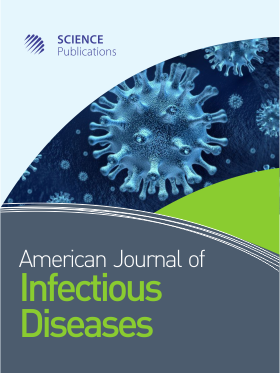Outcomes and Risk Factors Associated with Drug Resistant Tuberculosis in Rural Eastern Cape, South Africa
- 1 Walter Sisulu University and National Health Laboratory Services, South Africa
Abstract
With the emergence of Multidrug-Resistant (MDR) and Extensively Drug-Resistant (XDR) strains of Mycobacterium tuberculosis, Tuberculosis (TB) has become an even greater threat in South Africa (SA). The study sought to investigate the resistance pattern of anti-TB drugs in M. tuberculosis as well as to determine the associated risk factors and outcomes for MDR-TB and XDR-TB. A descriptive study was conducted in 2 sub-districts of Eastern Cape province. Laboratory testing on sputum samples was done using genotypic and phenotypic methods. Data related to risk factors and outcomes were collected. SPSS v.22 was used for statistical analyses. 224 patients were enrolled (33.9% HIV negative and 66.1% HIV positive). Of 224 TB isolates obtained, 196 (87.5%) were MDR-TB (including 23 rifampicin mono-resistant isolates), 2 (0.9%) were isoniazid mono-resistant and 26 (11.6%) were Pre-XDR and XDR-TB. Of 196 MDR-TB patients, 143 (72.9%) had a favourable outcome post anti-TB therapy as compared to 17(65.4%) XDR-TB patients out of 26; but this difference was not statistically significant (OR = 1.5; CI: 0.6 – 3.4; ρ = 0.27). Whilst 118 (68.6%) out of 172 MDR-TB cases were newly diagnosed, previous exposure to anti-TB therapy was found to be a significant risk factor for developing XDR-TB (OR = 2.5; CI = 1.1 – 5.9; ρ = 0.023).Despite that 34 (26.2%) out of 130 new drug-resistant (DR)-TB patients completed their therapy, only 17 (13.1%) were declared cured as compared to 23 (33.8%) cured patients among the previously treated group (ρ<0.0001).In contrary, 9 (13.2%) cases of relapse and 11 (16.2%) defaulters were found among the previously treated DR-TB patients as compared to new cases [1 (0.8%) relapse versus 11 (8.5%) defaulters, respectively] on therapy (ρ<0.0001). High rates of DR-TB among treatment-naive patients, compounded with prevalent cases of relapses and defaulters among previously treated patients, raise the importance of DR-TB acquisition through direct transmission rather than the evolution of resistance.
DOI: https://doi.org/10.3844/ajidsp.2018.69.76

- 5,092 Views
- 2,217 Downloads
- 5 Citations
Download
Keywords
- Multidrug-Resistant
- Extensively Drug-Resistant
- Outcomes
- Risk Factors
- Favourable Outcomes
- Poor Outcomes
